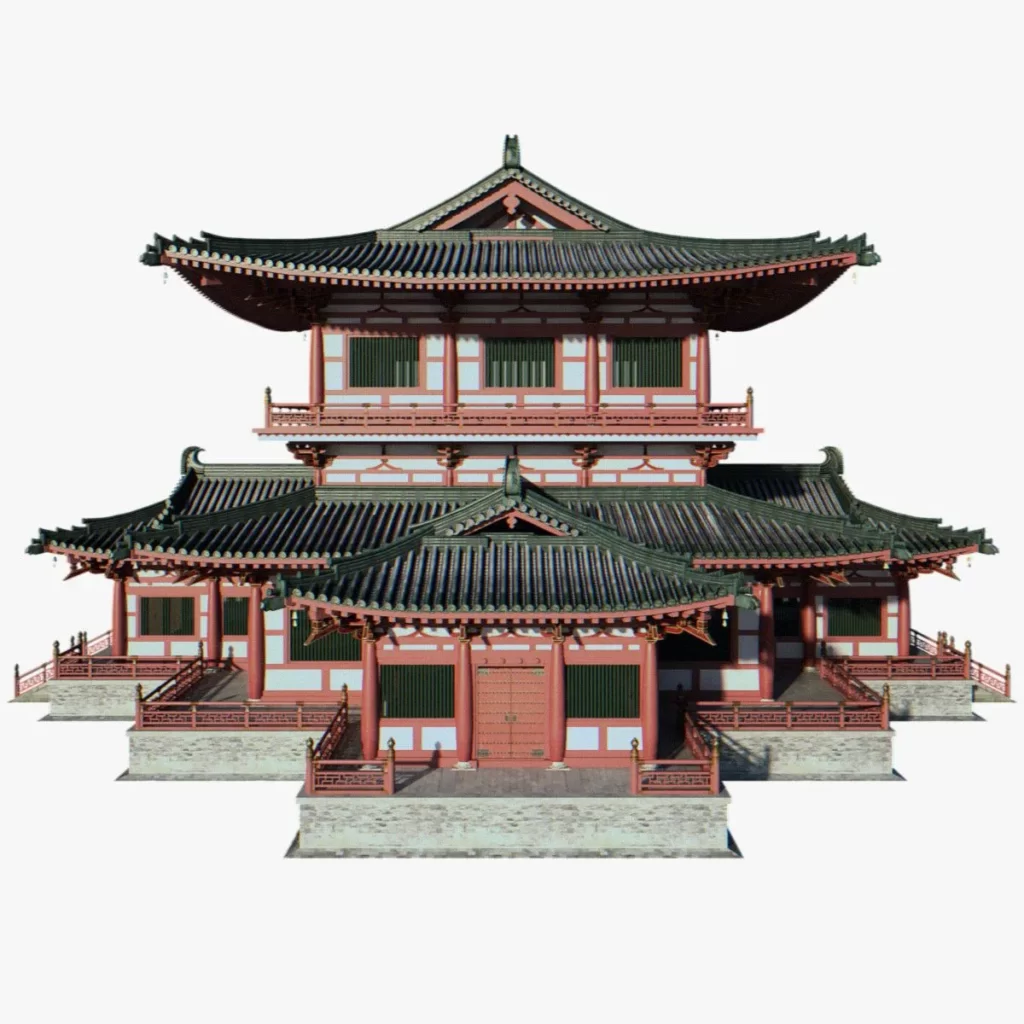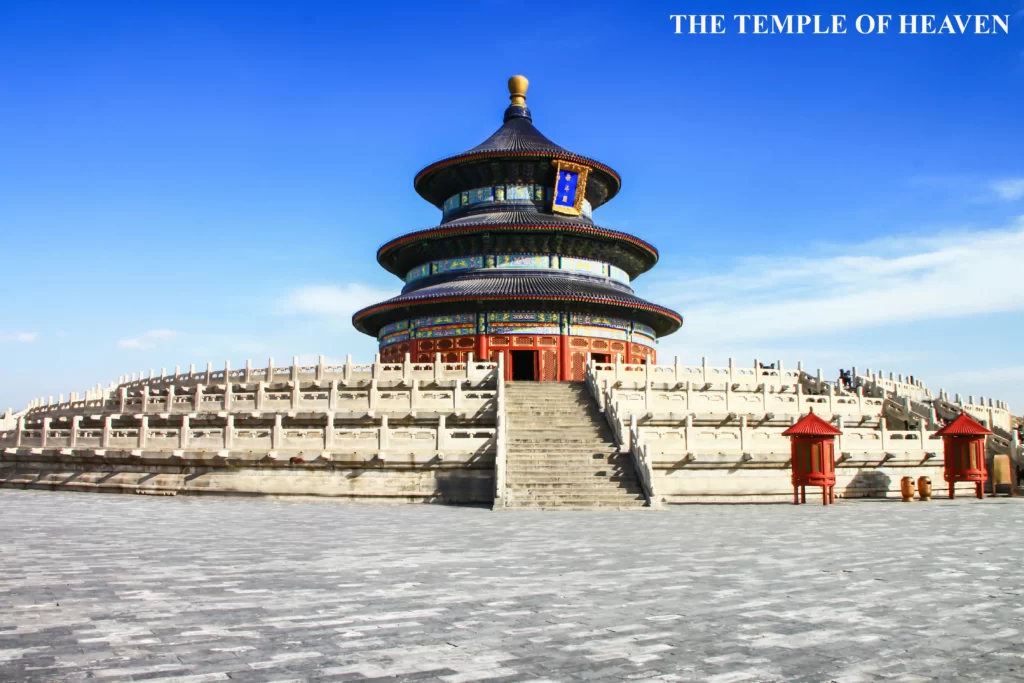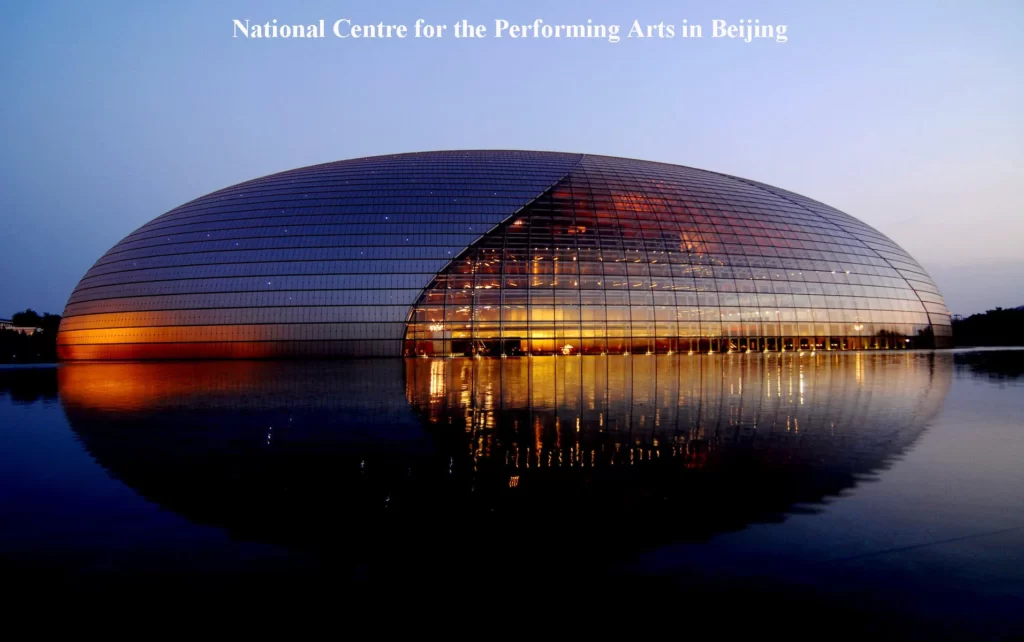If you want to know about the staircase design or landscape garden or requirements for disabled persons in a building, please click the link.
Introduction
Chinese building design in architecture is a topic that refers to the unique styles, techniques, and materials used in constructing buildings in China. The historical significance of Chinese building design in architecture dates back thousands of years and has evolved over time. Chinese building design is deeply rooted in the country’s rich cultural heritage and has been shaped by various dynasties, religions, and philosophies.

Understanding Chinese building design in contemporary times is essential as it influences modern architecture around the world. The traditional design elements, such as the use of wood, bamboo, and intricate carvings, have inspired contemporary architects and designers to create sustainable, eco-friendly, and aesthetically pleasing structures. By exploring the history and cultural significance of Chinese building design, we can gain a better appreciation for its unique features and its contribution to the world of architecture.
1) The Principles of Chinese Building Design
Chinese building design is based on several key principles that have been developed over thousands of years. These principles are rooted in Chinese culture, religion, and philosophy, and have had a significant influence on the country’s architecture. Some of the key principles of Chinese building design include feng shui, balance, and harmony.

Feng shui is an ancient Chinese practice that is still widely used today. It is based on the belief that the arrangement of objects and spaces can affect a person’s energy, health, and well-being. Feng shui principles are often incorporated into Chinese building design, with architects and designers carefully selecting the orientation, layout, and placement of buildings to promote positive energy flow.
Balance is another important principle in Chinese building design. This principle is based on the idea of yin and yang, which refers to the balance between opposing forces such as light and dark, hard and soft, and male and female. In Chinese architecture, balance is achieved through the use of symmetry, proportion, and contrast. Buildings are often designed with symmetrical features, such as identical doors and windows, to create a sense of harmony and balance.
Harmony is also a crucial principle in Chinese building design. This principle is based on the belief that everything in the universe is interconnected and must work together in harmony. Chinese architects and designers use various techniques to create harmony in their buildings, including the use of natural materials, such as wood, stone, and bamboo, and the incorporation of elements from nature, such as gardens and water features.
These principles have influenced Chinese building design over time, with each dynasty and period contributing unique features and styles to the country’s architecture. For example, during the Han Dynasty, the use of brick and stone in buildings became popular, while the Tang Dynasty is known for its elaborate and decorative architecture.
The principles of feng shui, balance, and harmony are still relevant in contemporary Chinese architecture, with many architects and designers incorporating these principles into their designs. For example, the Beijing National Stadium, also known as the “Bird’s Nest,” was designed with feng shui principles in mind, with its elliptical shape representing the unity of heaven and earth.

In addition to the principles of feng shui, balance, and harmony, Chinese building design is also characterized by its use of materials and construction techniques. Traditional Chinese buildings were constructed primarily from wood and stone, with wooden buildings being prevalent in the southern regions of China, while stone buildings were more common in the northern regions. The use of these materials was influenced by the availability of resources in different regions, as well as the local climate and geography.
Wooden buildings in China were constructed using a technique called dougong, which involved the use of wooden brackets to support the weight of the roof. This technique allowed for the creation of large, open interior spaces, and is still used today in the construction of traditional-style buildings.
In addition to traditional materials and construction techniques, contemporary Chinese architecture has also incorporated modern technologies and materials, such as steel and glass. However, even in modern buildings, the principles of feng shui, balance, and harmony continue to influence design choices.
Overall, Chinese building design in architecture is an important aspect of China’s cultural heritage and has had a significant influence on architecture around the world. By understanding the key principles and techniques of Chinese building design, we can gain a deeper appreciation for the country’s unique architecture and its contribution to the world of design and architecture.
2) Key Features of Chinese Building Design
Chinese building design is characterized by several key features that have been present throughout its history, including the use of natural materials, intricate ornamentation, and an emphasis on symmetry.
One of the most prominent features of Chinese building design is the use of natural materials, particularly wood and stone. This is due in part to the abundance of these materials in China, but also because of their cultural significance. Wood and stone are seen as natural and enduring materials that have a spiritual quality, and they are often used in traditional Chinese architecture as a way of connecting the building to its environment.
Another key feature of Chinese building design is intricate ornamentation, which can be seen in the decorative carvings, paintings, and calligraphy that adorn many traditional Chinese buildings. These decorative elements often incorporate symbolic motifs, such as dragons, phoenixes, and lotus flowers, which are meant to convey good luck, prosperity, and other positive qualities.
Finally, symmetry is an important element of Chinese building design, with many traditional buildings featuring a symmetrical layout and design. This is meant to create a sense of balance and harmony, and is often achieved through the use of repeating patterns and motifs.
Examples of these features can be seen in many famous Chinese buildings, both ancient and modern. For instance, the Forbidden City in Beijing, which dates back to the Ming Dynasty, features ornate carvings and paintings throughout its many halls and chambers, as well as a symmetrical layout. Similarly, the modern Beijing National Stadium, which was built for the 2008 Olympic Games, incorporates traditional Chinese design elements, such as the use of natural materials and a symmetrical layout, into a modern, innovative structure.
Overall, the key features of Chinese building design reflect the country’s rich cultural and historical heritage, and continue to influence architecture and design around the world.
3) Types of Chinese Buildings
Chinese architecture is diverse and encompasses many different types of buildings, each with their own unique features and characteristics. Some of the most common types of buildings found in Chinese architecture include temples, palaces, and courtyards.
- Temples are a central feature of Chinese architecture, reflecting the country’s deep spiritual traditions. These buildings are typically characterized by their ornate decoration, with intricate carvings and paintings adorning the walls and ceilings. They also often feature large courtyards and open spaces, which are used for prayer, meditation, and other religious activities.
- One of the most famous examples of a Chinese temple is the Temple of Heaven in Beijing, which was built in the early 15th century during the Ming Dynasty. This impressive complex includes several large halls and courtyards, as well as a number of smaller buildings, all of which are richly decorated with intricate carvings and paintings.

- Palaces are another important type of building in Chinese architecture, and were historically used as residences for emperors and other members of the royal family. These buildings are typically grand in scale, featuring multiple halls, courtyards, and gardens. They are often characterized by their elaborate decoration, with intricate carvings, paintings, and other ornate features.
- One of the most famous Chinese palaces is the Forbidden City in Beijing, which was built during the Ming Dynasty and served as the imperial palace for over 500 years. This massive complex includes more than 900 buildings, all of which are richly decorated with ornate carvings and paintings.

- Finally, courtyards are another important type of building in Chinese architecture, and are often used in residential and commercial settings. These buildings are typically characterized by their open, airy design, with multiple buildings arranged around a central courtyard. They often feature intricate decoration, with carved wooden screens and other decorative elements.
- One famous example of a Chinese courtyard is the Wang Family Compound in Shanxi Province, which was built in the 18th century and includes over 100 courtyards and 1,000 rooms. This impressive complex is notable for its intricate decoration, which includes carved wooden screens and painted murals.

Overall, the different types of buildings found in Chinese architecture reflect the country’s rich cultural heritage, and continue to be an important influence on architecture and design around the world.
4) Contemporary Chinese Building Design
Chinese building design has evolved over time while retaining its unique features and cultural significance. In recent years, contemporary Chinese architects have pushed the boundaries of traditional building design while still honoring their cultural heritage.
Chinese building design has been influenced by various factors, including geography, climate, culture, and religion. The use of natural materials, intricate ornamentation, and emphasis on symmetry are some of the key features of Chinese building design. Historically, Chinese buildings were constructed using wood and brick, and the use of stone was reserved for significant structures such as temples and palaces.
Contemporary Chinese architects have incorporated traditional elements in modern architecture while also incorporating new technologies and building materials. For instance, the use of glass, steel, and concrete has become prevalent in modern Chinese architecture. However, architects still incorporate traditional elements such as courtyards, intricate ornamentation, and emphasis on symmetry in their designs.
There are several famous contemporary Chinese buildings that showcase the integration of traditional elements with modern architecture. One such example is the National Centre for the Performing Arts in Beijing, also known as the “Egg”. The building’s unique shape and design, with its dome-shaped structure made of titanium and glass, pay homage to traditional Chinese architecture while incorporating modern materials.

Another example is the Shanghai Tower, the tallest building in China and the second tallest in the world. The building’s spiral shape is inspired by the traditional Chinese symbol of the dragon, and the exterior features a lattice pattern that represents the traditional Chinese window lattice.

In conclusion, Chinese building design has evolved over time while retaining its unique features and cultural significance. Contemporary Chinese architects have pushed the boundaries of traditional building design while still honoring their cultural heritage. The incorporation of traditional elements in modern architecture has resulted in unique and innovative designs that showcase China’s rich architectural history and culture.
5) Conclusion
In summary, this article highlights the importance of Chinese building design as a significant cultural heritage. It explains the historical significance of Chinese building design and how it has evolved over time. The article discusses the key principles, features, and different types of buildings found in Chinese architecture, highlighting their cultural and historical significance. It also explores the ways in which contemporary Chinese building design has evolved while still incorporating traditional elements, and provides examples of famous contemporary Chinese buildings. The article emphasizes the importance of understanding and appreciating Chinese building design in contemporary times and encourages readers to explore and appreciate its beauty and diversity.